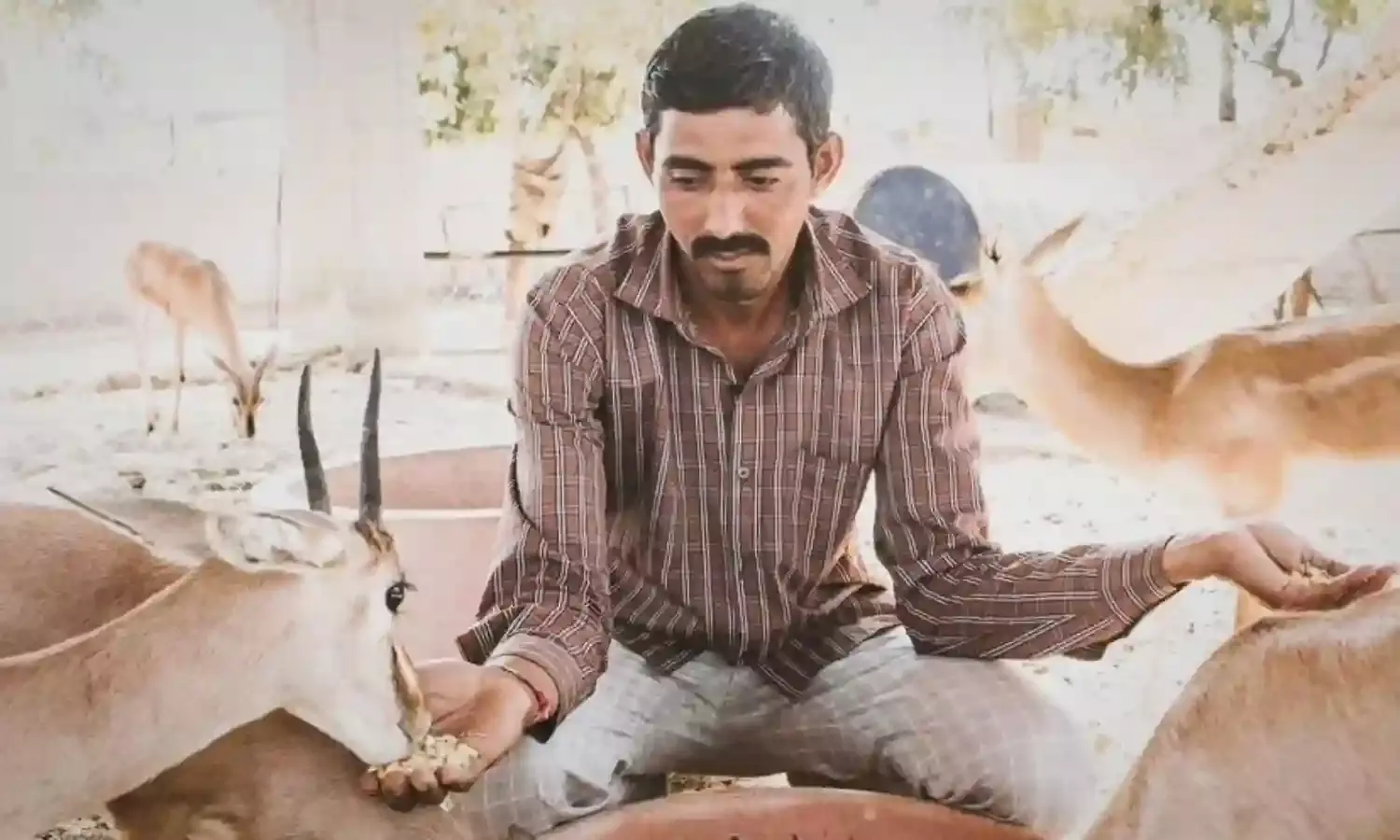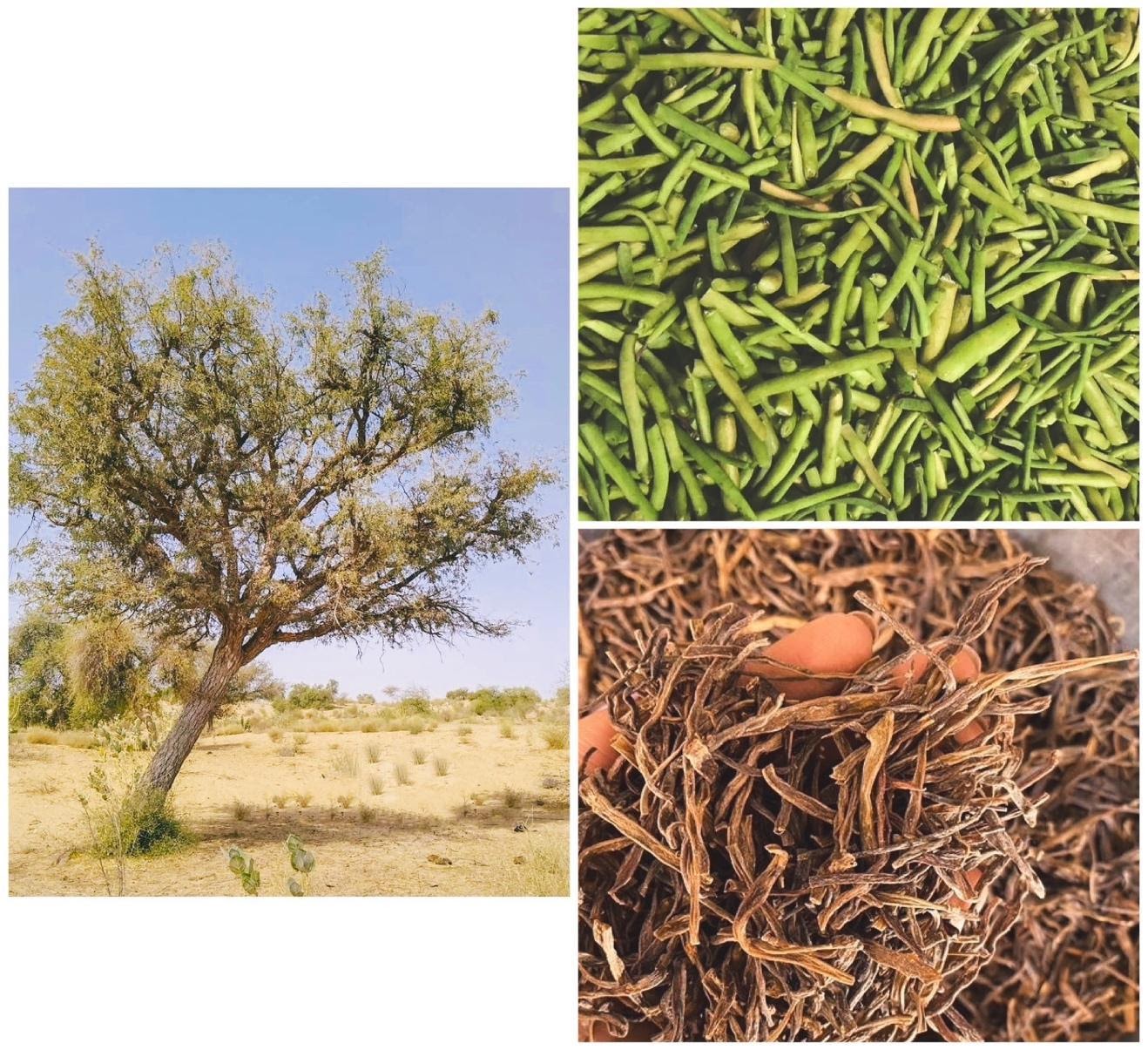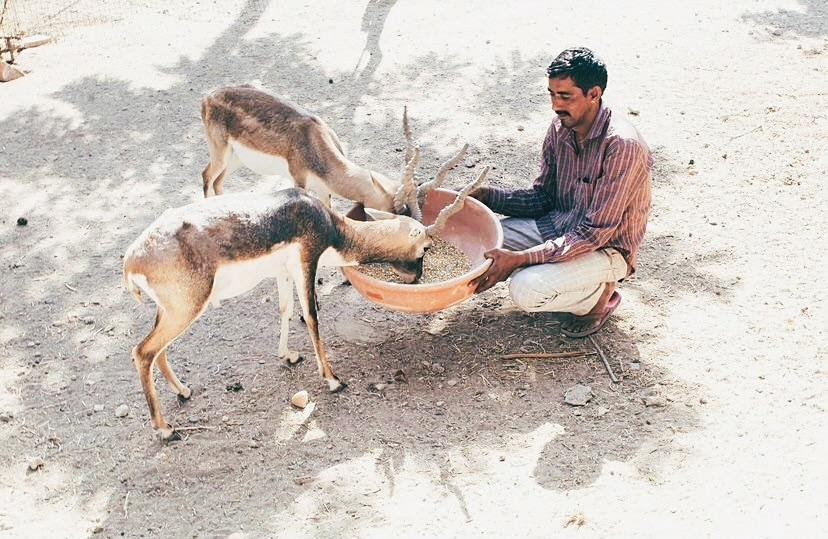Rajasthan’s Oldest Environment Activists
There are instances of Bishnoi men and women dying to protect other living beings from 1600 CE

Shyam Lal Bishnoi is a 28 year old man born and raised in the tiny desert village of Khejarli near Jodhpur, Rajasthan. He followed his father’s footsteps in ecological conservation and has committed his life to his father and mentor’s teachings. With other villagers, notably Ghewaram, he established a rescue center for stray animals and has sworn to protect the wildlife here.
Shyam Lal holds weekly gatherings to share with children that learning to appreciate nature is the first step toward caring for it. He teaches the proper use of waste receptacles, and to recycle, reuse and reduce. To support their local animal shelter, and report any maltreatment of animals or trees.
“A Bishnoi gives his life to protect wildlife from poachers, and our women look after orphan fawns and even feed it milk along with their own child,” he tells The Citizen.
Shyam Lal and Ghewaram discuss the Khejarli slaughter perpetrated in September 1730, in which soldiers killed 363 Bishnois who were peacefully protecting a grove of Khejri trees. The campaign had a long impact on political ecology, and is referred to as a forerunner of the Chipko movement of the 1970s.
They recount. The Maharaja of Marwar had dispatched his men to slay trees in Khejarli so he could have timber for a new palace. When Amrita Devi, a bold Bishnoi woman, learned of the impending order, she raced to the village of Khejarli, where the Khejri trees grew in plenty, and confronted the royal troops.
Escorted by relatives and neighbours, Amrita Devi tried her hardest to stop the soldiers from chopping the trees in bulk. And when all other options failed, she hugged the first tree to be felled in order to save it.
The troops decapitated the woman, whose last words, sar saanthe runkh reho to bhi sasto jaan, if a tree is spared at the expense of one’s life it is worth it, are now legacy.
Amrita Devi, an environmental warrior, was a heroic lady from Khejarli village near Jodhpur, Rajasthan, who gave her life along with her three daughters, Asu, Ratni and Bhagu, on the altar of Bishnoi Dharma in the year 1730, they recount.
Amrita Devi has a long and illustrious history in the Bishnoi community. Each year on the anniversary of her martyrdom a fair is held in Khejarli to commemorate her eternal sacrifice.
The governments of Madhya Pradesh and Rajasthan present a prestigious state-level Amrita Devi Vishnoi Smriti Award each year for outstanding contributions to the protection and conservation of wildlife.
There are documented cases of Bishnoi men and women dying to protect other living beings prior to this incident around 1600 AD, say Shyam Lal and Ghewaram. The Bishnoi have a strong dedication to protecting and preserving the environment and natural life.
They say that Guru Jambeshwar, a Rajput leader from Marwar in western Rajasthan established the Bishnoi lineage. He set 29 commandments that must be followed by a Bishnoi until death, the most important of which deal with protection and respect for all living things. The Bishnoi are required to provide a safe haven for abandoned animals and are prohibited from felling trees; they must also promote resource-sharing with the fauna.
Now they say their way of life is an eclectic mix of their roots and contemporary practices. Despite threats to their safety Bishnoi activists continue about their work in the desert without fear.
During my visit I found the community indicate that the Bishnois wrath against “poaching” extends beyond the corridors of a religious vision. They have built a warm relationship with non-human animals and share with them their fields and homes as well as their sacred areas, and sometimes care for weak or injured birds and other animals.

The khejri tree is an important source of food
“Every living creature has the right to exist peacefully,” says Shyam Lal Bishnoi. “Other communities must absorb and practise the teachings in environmental commitment, so the earth will truly be inhabited by environmentally conscious people.”
He says that although it is listed as endangered with the highest level of protection under the First Schedule of the Wildlife Protection Act, chinkara poaching has increased dramatically.
The chinkara, a globally vulnerable gazelle that was previously widely dispersed in India, is threatened by the rising human population, mechanised agriculture, and by people who use it as a delicacy or for hunting trophies.
Shyam Lal describes how certain poachers believe it is acceptable to murder animals for the sake of pleasure, and that their lives are meaningless. He adds that habitat loss as a result of urbanisation and industrial expansion are two other risks.
Discouraged by the hunters’ attacks, Bishnoi activists in western Rajasthan have created a strong communication network and stage anti-poaching protests regularly to question the link between law, justice and democracy.
Kapil Chandrawal, deputy conservator of forests in the Jaisalmer district, describes the chinkara and other animals have wildlife conservation, rescue and treatment centres run by local residents.
“The villagers’ effort to rescue and safeguard its species is remarkable, and they play a big hand in its protection. This practice has been going on for centuries. The locals fear this sect,” says Chandrawal.
A few of the village’s rescue centers are run by local residents, where injured deer, Nilgai infants, rabbits, peacocks and other species are brought in. They are returned to the village grasslands after being treated.

Asked about global warming, Ghewaram and Shyam Lal describe it as the greatest threat that modern humans and the natural kingdom have ever faced. They explain how they built ponds for these animals, but with the surface temperature rising due to global warming, there is occasionally water scarcity due to evaporation.
They express concern at the fact that humans have wiped out 68% of global wildlife populations in just 40–50 years, and that 90% of us breathe harmful air.
“Only we are the key to a better life and a healthy planet, it all begins with us, and only we together can transform our future,” they tell The Citizen, emphasising that human activities are the primary cause of global warming.
Despite the difficulties they suffered through the pandemic, the villagers and their cattle, Ghewaram and Shyam Lal Bishnoi say they have continued to administer the rescue centre in Khejarli.
“The future is in our hands, we need to act decisively because nature is our biggest and most valuable ally.” The message this pioneering ecologist community has for the country’s other citizens.
Photographs: Swapnil Mittal



